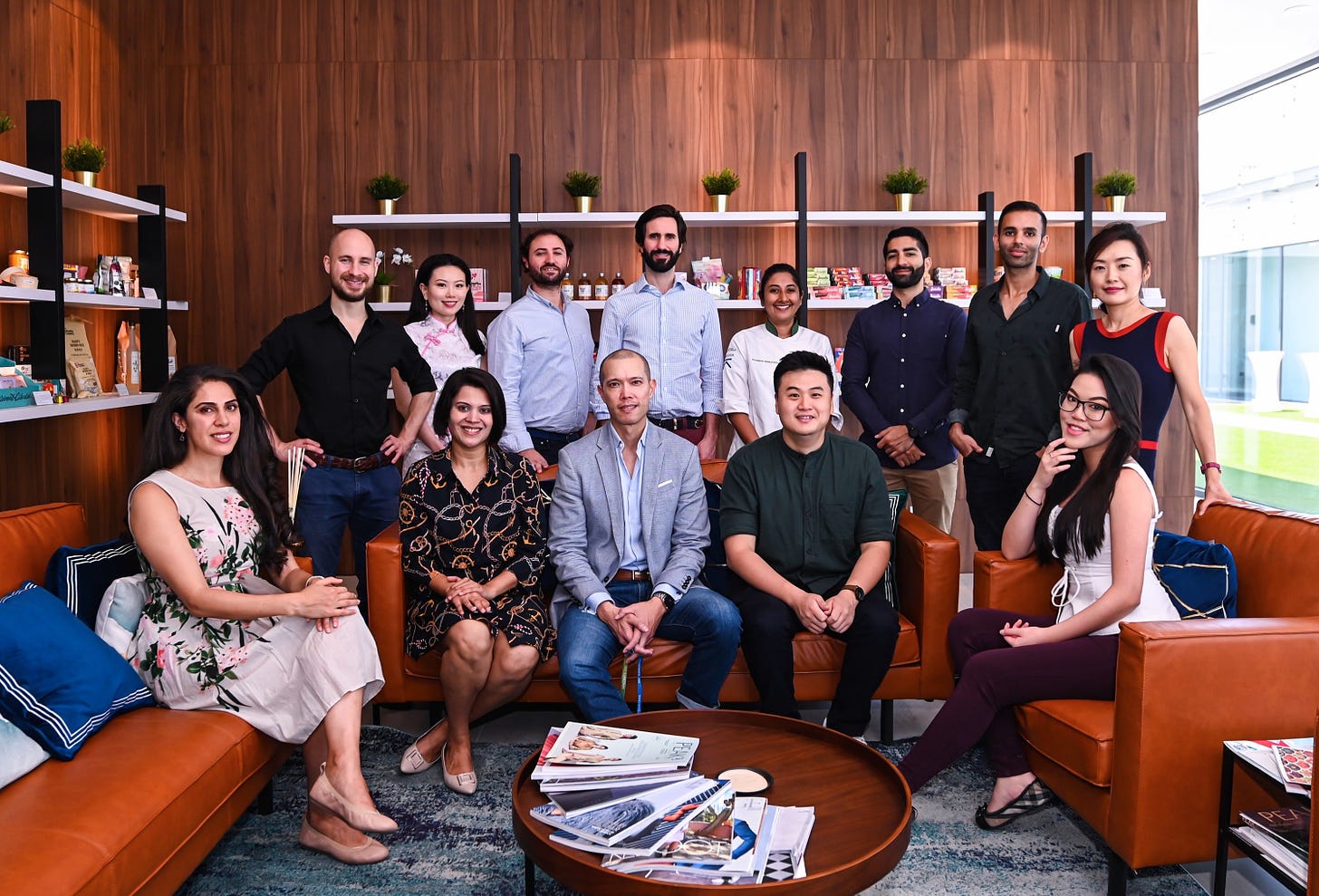Why Investors Are Excited About Alt-Seafood
Happy Tuesday Market Shakers. Two weeks ago we wrapped up our alt-seafood series, including commentary from Dr. Dalal AlGhawas, Program Director, Singapore at Big Idea Ventures. Our interview with Dr. AlGhawas was ripe with fascinating insights so today we’re publishing it in its entirety. This interview explores why venture companies are excited about alt-seafood, why we should be too, and the Japanese ingredient that has huge potential to shape the category.

Introducing Dr. Dalal AlGhawas
Dr. Dalal AlGhawas (pictured above) is an Agri-tech businesswoman who has worked extensively in food, biotechnology and medical sciences. She began working in investment as a scientific advisor, before becoming the Program Director Singapore for Big Idea Ventures (BIV).
Dr. AlGhawas is active in supporting the alternative protein movement, regularly speaking at conferences and with companies, to understand how they can retrofit their supply chains to incorporate alternative proteins. She has supported over 100 companies to get funding and establish strategic R&D partnerships, including alternative seafood companies. So why is Dr. AlGhawas and the whole BIV team hooked on the idea of faux-fish?
Why the recent surge in alt-seafood investments?
There are so many potential varieties of seafood and products to explore with alternatives. People often equate seafood with whitefish, like tuna or snapper, but the category has an almost endless number of species to develop alternatives for. From the world’s first cultivated crustacean company Shiok meats making shrimp, crab and lobster to Pearlita developing the first cultivated oyster.
Alt-seafood also has great potential for localization. The varieties and ways of eating seafood differ greatly around the world. Companies can experiment with all types of products – not only whole cuts. We have a company in our portfolio, Fisheroo that is developing cultivated surimi for example.
There are good reasons to get on board with exploring all these opportunities in alt-seafood. Overfishing species to the point of near extinction, and destructive commercial fishing practices that devastate marine ecosystems, to name a few.
More and more innovators are starting to work on alternatives as a solution to these problems. Ingenuity and opportunity are already coming together to produce exciting results and new innovations.
We’re seeing alternative seafood transcend the food category. For example, Avant Meats, who make cultivated meat and seafood has commercialized their ingredients through cosmetic products.
Another example is Jellatech, one of BIV’s portfolio companies, who used cells from jellyfish and marine origins to cultivate gelatin and collagen, with commercial applications in medical and cosmetic products.

Growing innovations like these attract growing investment and vice versa. Interest in new categories from funds like BIV plays an important part in their development. But why has the world suddenly woken up to the opportunities in the alt-seafood space?
Like what you’re reading?
Subscribe
What took us so long to catch on to alt-seafood?
It’s taken a while for interest in alt-seafood to take off. Now that it has , investment is pouring in at record rates. According to Dr. AlGhawas, how people see seafood means they have so far been focused on terrestrial alternatives.
We’ve been aware that terrestrial livestock farming is bad for our planet for a long time. It’s orders of magnitude worse than seafood in terms of Green House Gas emissions. So the F&B industry has been focusing on alt-meat. The same goes for consumer demand. Growing awareness amongst the industry about the dangerous situations our oceans are in and contamination in seafood has opened companies’ eyes to the need and potential of alternatives.
Customers are still not there yet though. There’s a general consensus that fish is healthy and much less damaging to our planet (than terrestrial proteins). There needs to be work done to raise awareness that, actually, seafood production does pose environmental threats. What’s more, seafood is also contaminated with plastics and heavy metals, and like livestock, chemicals from farming.
In addition to seafood being considered healthy and relatively sustainable, there are technical challenges to producing alternatives too. The three main verticals, plant-based, fermented and cultivated seafood, all face different hurdles here.
Plant-based has the most potential right now. It has the greatest potential to scale thanks to existing infrastructure and an understanding of plant-based meats. There are very few regulatory hurdles too. But plant-based products struggle to compete with fermentation and cultivated alternatives on nutrition and texture.
Fermentation-derived protein is nothing new and pioneers such as Quorn have developed and commercialised mycoprotein since the 90s, bringing along with it innovations in bioreactor designs (the vessels used to ferment the microbial substrate mix) and novel food applications for microbial strains used in this production system. BIV company Aquaculture Foods uses biomass fermentation to develop whole muscle cut seafood such as squid, white fish and shrimp to be able to develop texturised seafood, calamari and sashimi slices.
Fermented and cultivated alternatives will have a longer time scaling. The production facilities and processes are still being developed and refined. We also haven’t regulated these types of alternative proteins, especially if they require genetically modified (GM) applications, and doing this will take time.
Share this story with your friends and colleagues:
Share Market Shake by GourmetPro
So, low awareness about the unsustainability of conventional seafood and the associated health risks, and then the technical challenge of making alternatives are the reasons why it’s taken us so long to catch on to alt-seafood. Challenges remain, for sure, but VCs and their partners are invested in helping faux-fish innovators thrive.
What are BIV looking for in terms of investments?

BIV is particularly interested in investing in startups that have synergy with their partners. They work closely with their partners to identify opportunities for collaboration.
Ultimately, we need to leverage our network and make optimal investments that create opportunities for startups and our partners. Our partners, from processors through to distributors, are keen to support our portfolio companies so they can collaborate and scale.
For example, our partner NRF, a Thai company that is a leading co-manufacturer for alt-protein and plant-based foods, are working with us to retrofit their facilities with technology that can support the alternative protrein ecosystem and our portfolio companies.
Another example is our partner Buhler, the extrusion experts, who launched a Protein Innovation Center last year with Givaudan. So we seek more companies to add to our portfolio who can benefit from enhanced texturization of seafood analogues.
The industry can only grow together and BIV are seeking big ideas from startups that have synergy with our partners.
If you’re a startup and you’re interested in collaborating with BIV, reach out to here.
